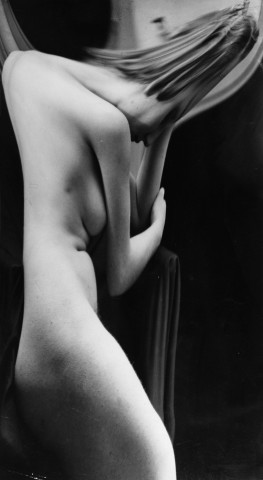André Kertész
1894 - 1985Distortion #165, 1932 - 1933
Printed c. 1940Annotated and artist New York stamp on verso
Vintage Silver Gelatin Print
25,4 x 14,6 cm
“I write with light,” Andre Kertész once said of his work. In one of the medium’s longest and most productive careers, Kertész created a vast, lyrical narrative that helped shape...
“I write with light,” Andre Kertész once said of his work. In one of the medium’s longest and most productive careers, Kertész created a vast, lyrical narrative that helped shape the history of photography. He used the camera to question, record, and preserve his relationships to the world and to his art.
His personality was never dominated by the ideas of others, for his eyes had always been primarily attuned and responsive to the human element in all work. He always maintained that his photographs were in an important sense what he felt. His own constructivism was achieved almost without mechanical objects, almost exclusively by reference to the hand built, the man made. Especially the nude photographs, as named “Distortions”, that he was experimenting with were harshly rejected at the start. This deeply hurt Kertész, because for him his photographs “represented his perpetual research which photography permitted.”
© Cigdem Mirol
His personality was never dominated by the ideas of others, for his eyes had always been primarily attuned and responsive to the human element in all work. He always maintained that his photographs were in an important sense what he felt. His own constructivism was achieved almost without mechanical objects, almost exclusively by reference to the hand built, the man made. Especially the nude photographs, as named “Distortions”, that he was experimenting with were harshly rejected at the start. This deeply hurt Kertész, because for him his photographs “represented his perpetual research which photography permitted.”
© Cigdem Mirol
Provenance
Gift of Dr. Richard L. Sander to the School of the Art Institute of ChicagoLiterature
Ducrot, Distortions, André Kertész, n.p.Jeu de Paume, André Kertész, p. 181
